Arachnophobia is a common but mostly irrational fear; almost all spiders are no threat to human beings at all. One of those fear inducing but harmless spiders is the Jumping Spider. There are about 5800 species of Jumping spider living all across the world. Today, we are going to talk about just one! Hasarius adansoni, a common jumping spider in much of Asia.
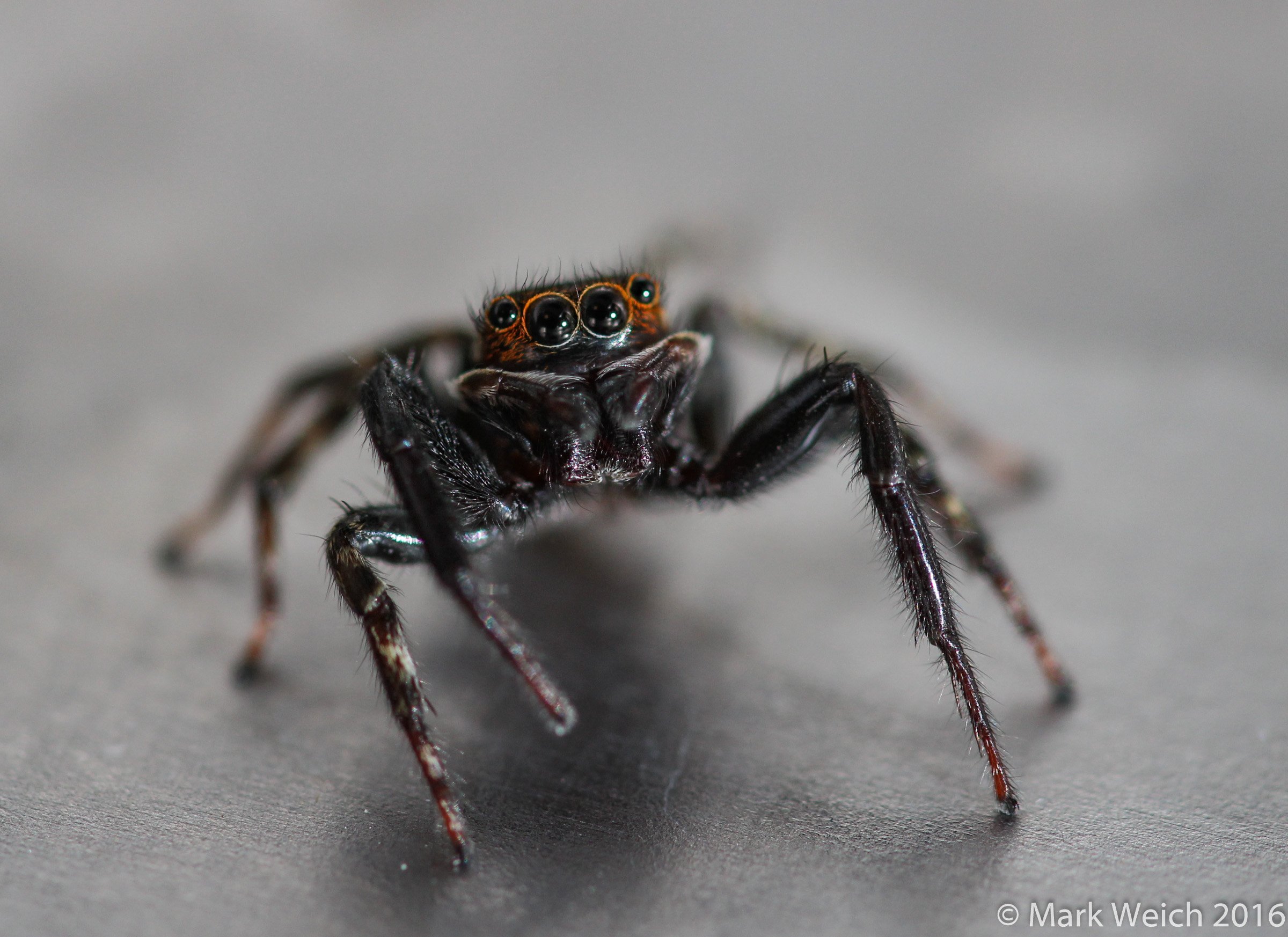
Click any photo to see it larger on my 500px portfolio! :)
Currently, I have about three of these spiders roaming about my house! It seems that as the weather has gotten a bit cooler and quite a bit wetter with the recent typhoons, the spiders prefer the slightly sturdier shelter of a house.
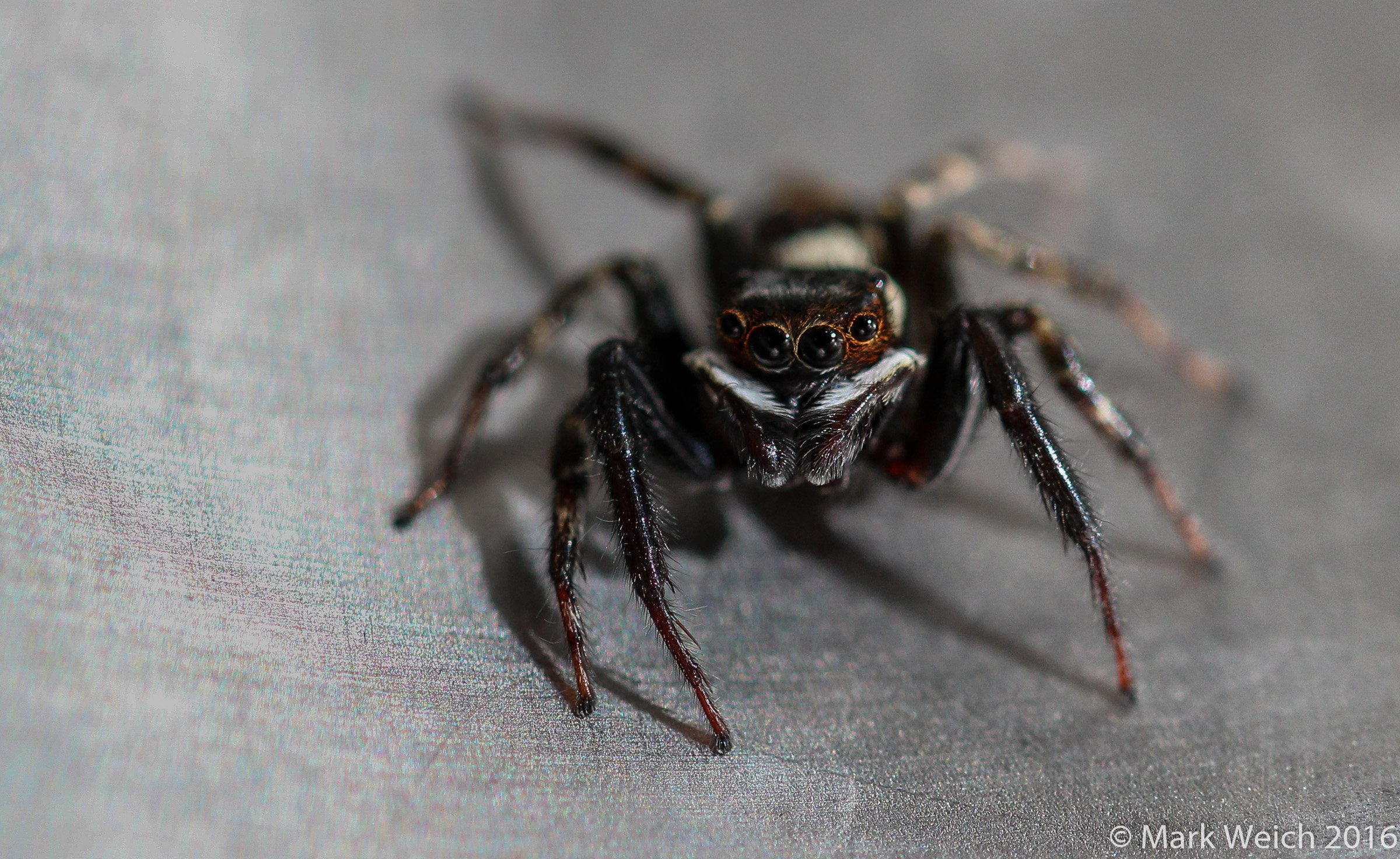
The male of this species has bright white hair on its palps. It uses them for courtship and displays of strength and fitness. The contrast between the white and mostly black body of the spider makes them quite entertaining to watch. It looks a bit like they are using semaphore to communicate as they move them up and down!
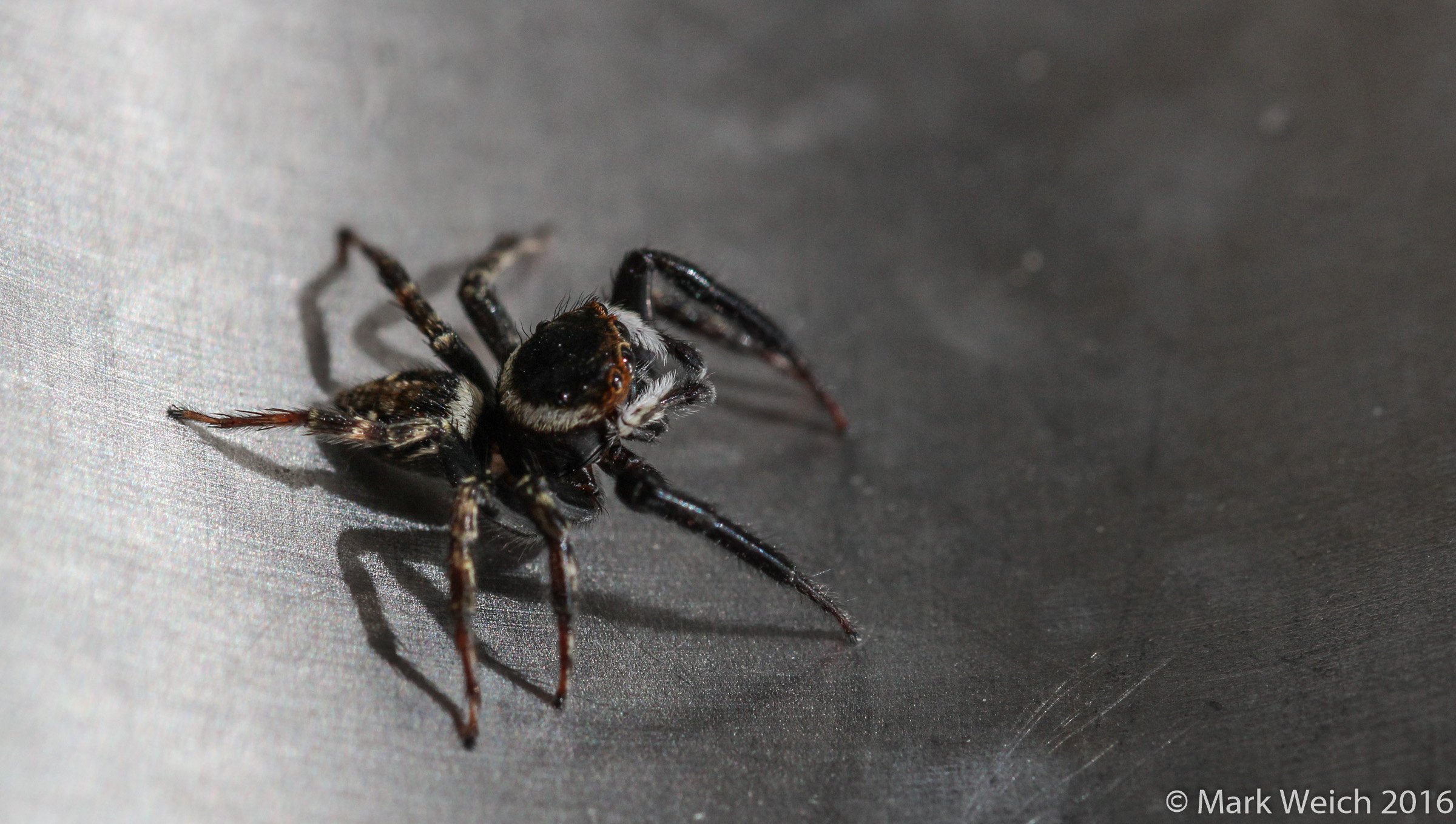
Interestingly, these spiders jump by pulling on the ground with their forelimbs rather than pushing with the rear legs as a grasshopper would. Like doing a push up and grabbing onto the ceiling. This profile image shows just how much thicker the first pair of legs is compared with the others.
He had inadvertantly trapped himself in the kitchen sink, the stainless steel walls were just too slick for him to get out. After taking a few shots, I gently gave him a boost back up to the counter. He quickly scittered off behind the salt shaker and then the top of the refrigerator. Where he is now, nobody knows!
A few days before spotting the above spider, I was able to photograph a female of the same species on the window. It was at night so the glass turned into a very nice mirrored surface.
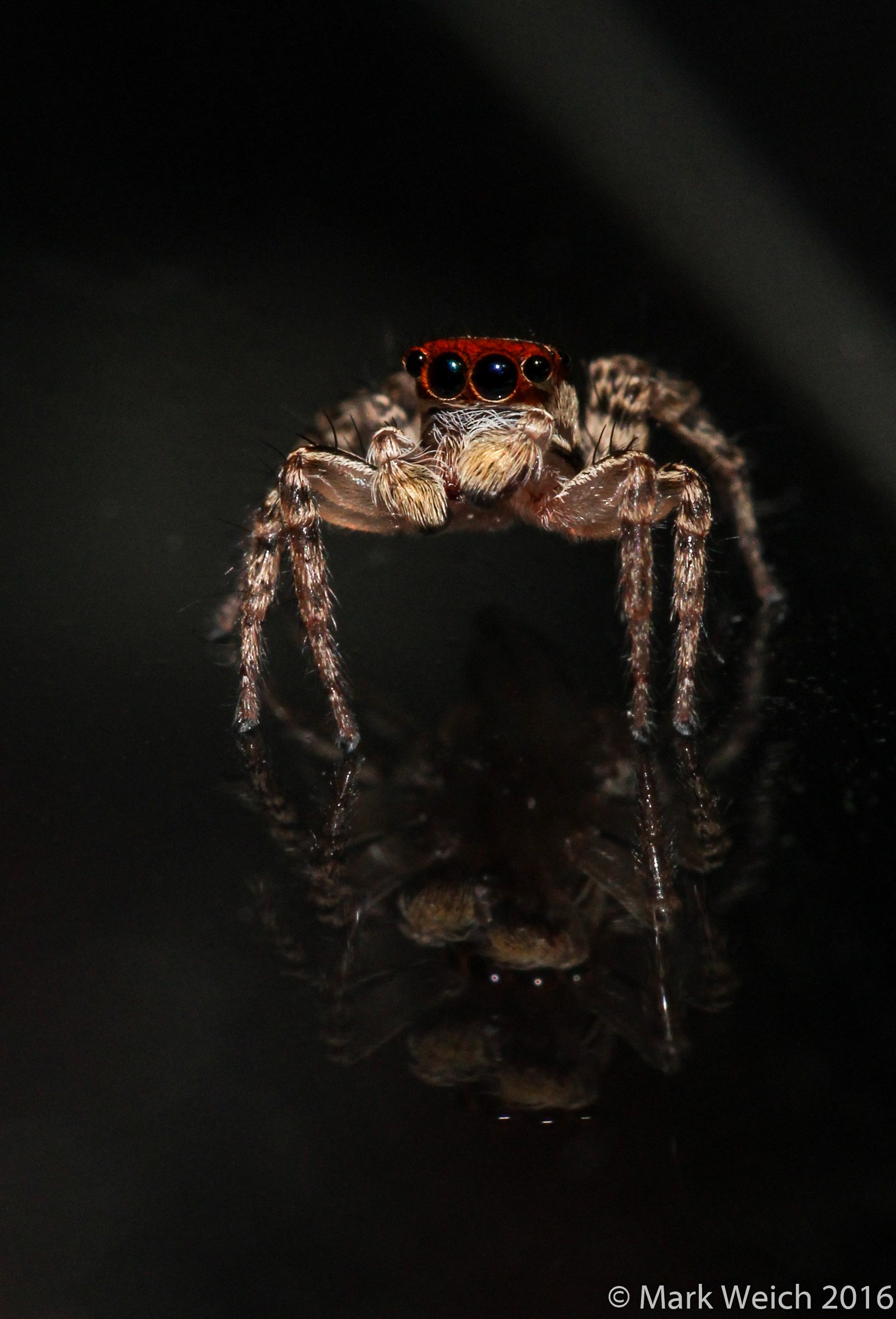
She has the same red colouration around the front of the head but lacks the bright white and black contrasting pattern of the male spider.
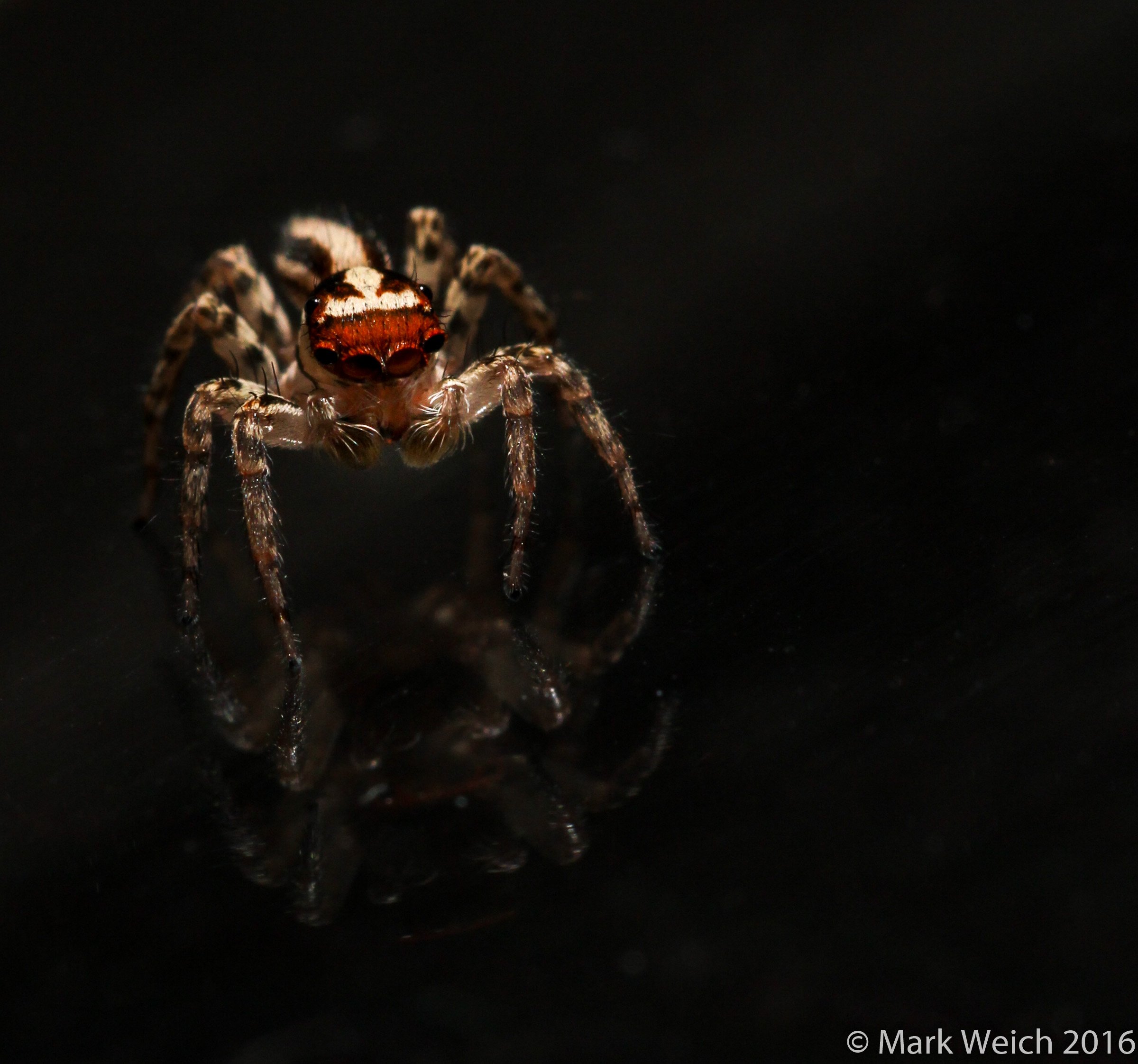
Another interesting behaviour of jumping spiders is that they are very curious and since they use their eyes to distinguish friend from foe, they will show a great deal of interest in their reflection. In glass or in the lens of a camera, they will look at the reflection as though it were another spider; making it relatively easy to get a portrait.
Unless they are enamoured by themselves:

The glass provided some wonderful reflections!
She has an amazing stipped pattern!

Special thanks to @mikemacintire for his shot of a crab spider using off camera flash, these spiders were in my house and even with the room lights on; it was too dark for macro photography of a moving subject. Thanks to his shot reminding me that I could use off camera flash for macro, I've been able to take my best pictures of these jumping spiders yet. Thanks @mikemacintire!
Those reading, please check out his photos too, he's rather good!
An earlier post of mine showcasing other local (Central Japan) jumping spiders.
Source for statistics and facts: Jumping Spider on Wikipedia.
I hope you are enjoying these posts as much as I do writing them!
Comments and feedback are always welcome.
Please upvote and follow to see the next installment in your feed!
Reblog if you think your followers would enjoy this post, thanks!
Also, if you like macro photography, check out some of the earlier posts in this series.
Little Monsters - Part I: Wolf Spiders
Little Monsters - Part II: Golden Orb Weaver
Little Monsters - Part III: Lynx Spiders!
Little Monsters - Part IV: Decorator Orb Weaver
Little Monsters - Part V: Black Back Paper Wasp
Little Monsters - Part VI: Dragonfly
Little Monsters - Part VII: Indian Fritallary
Little Monsters - Part VIII: Giant Japanese Hornet
Little Monsters - Part IX: Praying Mantis!
Little Monsters - Part X: Harlequin Ladybird!
Little Monsters - Part XI: Dragons!
Little Monsters - Part XII: Snails!
Little Monsters - Part XIII: Evil Weevils!
Little Monsters - Part XIV: Fantastic Phasmids!
Little Monsters - Part XV: To Bee or not to Bee?
I maintain and reserve copyright on all of my photos.
